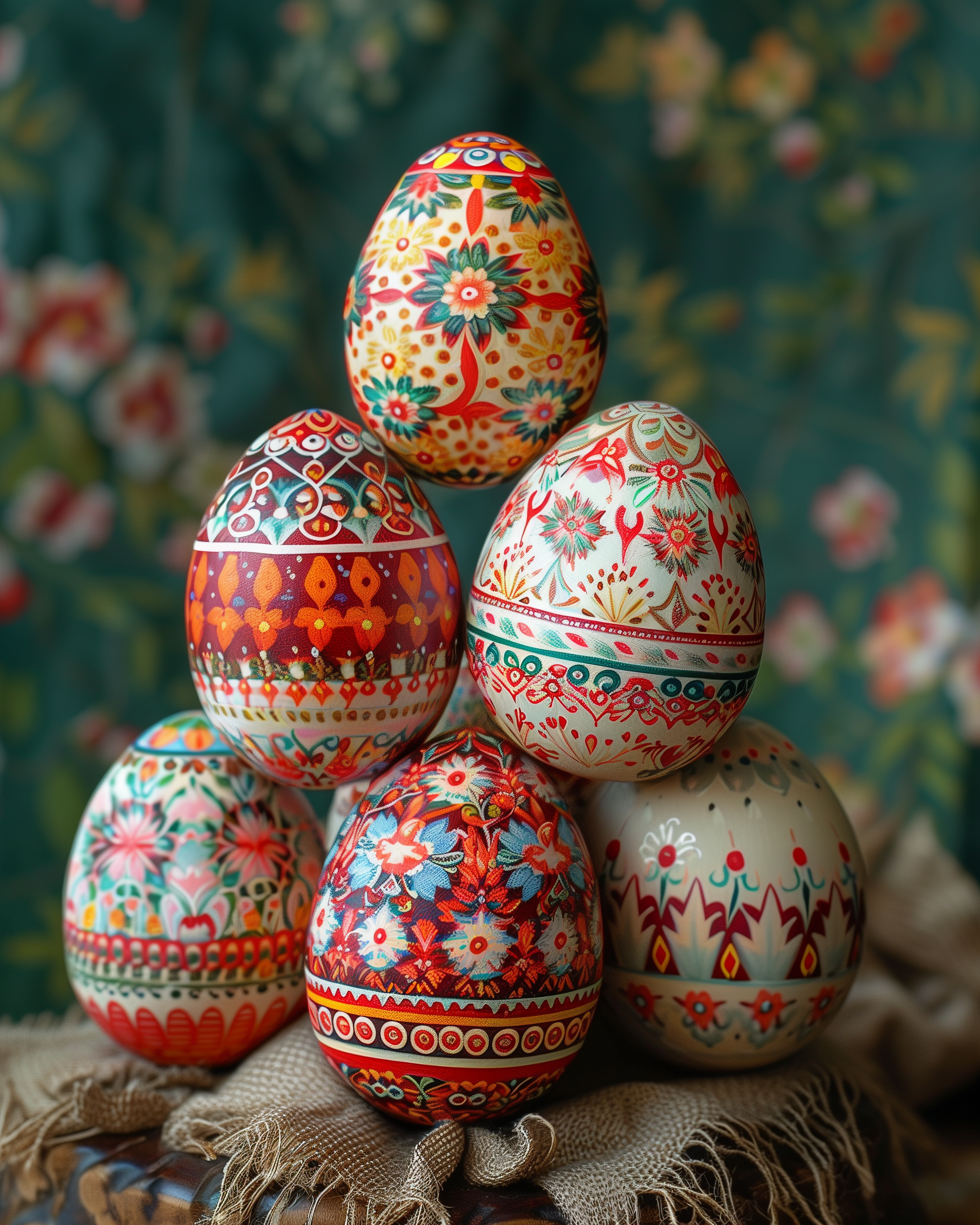In a small village in Romania, the Easter egg painting tradition is more than just a festive activity; it’s a heartfelt expression of culture and history. Every year, as Easter approaches, families gather around their kitchen tables, armed with dyes, beeswax, and tiny tools, ready to turn simple eggs into vibrant works of art.
The story begins with Maria, a grandmother in the village, who has been painting eggs every Easter since she was a little girl. As the village church bells ring in the season, Maria sets up her workspace with all the colors of spring—brilliant blues, radiant reds, and gleaming greens. The dyes are prepared from natural ingredients, echoing the beauty of the Romanian countryside.
Maria’s grandchildren gather around, their eyes wide with wonder. They watch intently as she lights a candle and melts a small piece of beeswax. With a traditional tool called a ‘kistka’, she dips into the wax, then carefully draws fine lines on an egg, forming intricate patterns. Each line is a symbol, Maria explains, with meanings passed down through generations—fish for abundance, a triangle for the Holy Trinity, and stars for purity.
After the wax outlines are set, Maria dips the eggs into the dyes. The children’s excitement mounts as each egg is transformed, revealing stunning designs where the wax has preserved the original color of the eggshell beneath. The process is slow and meditative, a lesson in patience and precision that Maria is passionate about passing on.
As the final step, the eggs are gently heated to melt away the wax, unveiling the intricate patterns against the vivid colors. The room fills with gasps and smiles as each creation is revealed. Maria hands the eggs to her grandchildren, who hold them delicately, feeling the smooth shell and the weight of tradition in their small hands.
This tradition, Maria tells them, is more than just decorating eggs. It’s about bringing the family together, sharing stories of ancestors, and connecting with a heritage that has colored the fabric of their community for centuries. It’s a moment of pride, not just for her, but for every generation seated at that table.
As the day ends, the eggs are placed in a basket, ready to be blessed at the church the next morning, a testament to faith and the enduring bonds of family. For Maria and her village, the painted eggs are not just symbols of Easter, but emblems of love and the beauty of shared traditions.


